Monroe, Louisiana, seeks to improve unsafe streets to benefit all users. City staff, community advocates, and the mayor are working to improve the design and conditions of the South 2nd Street corridor. Adopting Complete Streets principles and increasing access for all users can yield significant health, environmental, and economic benefits.
Monroe is a city of around 47,000 people in northeast Louisiana along the banks of the Ouachita (pronounced WAH-shi-taw) River. A historic riverfront city with a rich history, Monroe was once an important regional hub for agriculture and business and played a crucial role in the early days of Coca-Cola and Delta Air Lines. Today, however, the average household incomes in the city are significantly lower than the state and national averages, and the city’s car-centered development in recent years has led to streets that are unfriendly for pedestrians and cyclists.
 The Mayor of Monroe, Friday Ellis, wants to make the city safer and more user-friendly for people walking, biking, and rolling. He participated in Smart Growth America’s 2022-2023 Champions Institute. During this program, he and his administration explored ways to make his city safer, healthier, and better connected. Now, they are continuing that momentum and seeking to make significant improvements to the city, particularly in historically underserved areas.
The Mayor of Monroe, Friday Ellis, wants to make the city safer and more user-friendly for people walking, biking, and rolling. He participated in Smart Growth America’s 2022-2023 Champions Institute. During this program, he and his administration explored ways to make his city safer, healthier, and better connected. Now, they are continuing that momentum and seeking to make significant improvements to the city, particularly in historically underserved areas.
A key initiative is a road diet and improvements to approximately 1.3 miles of the South 2nd Street Corridor from Calypso Street to Plum Street. This is a key connector linking South Monroe to downtown that was primarily designed for cars. Proposed enhancements include a separated bicycle track, widened sidewalks, high-visibility crosswalks, and improved public transit amenities. The overall goals of the project are to improve safety, mobility, and access for all road users while enhancing the overall quality of life in the city.
As they examined the potential benefits of the project, the mayor’s office used the Measuring the Benefits of Complete Streets tool developed by Smart Growth America in partnership with CDC’s Active People, Healthy Nation℠ Initiative. By applying this tool to predict the impacts of proposed Complete Streets improvements on South 2nd Street, they discovered and quantified numerous benefits that simple changes in road design could bring.
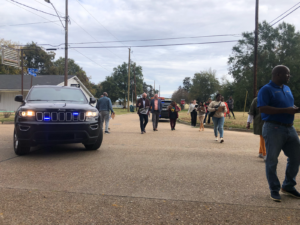 Need for change on South 2nd Street
Need for change on South 2nd Street
South 2nd Street is an arterial road that runs through South Monroe from Winnsboro Road to downtown. It connects several different neighborhoods, including ones that have historically been neglected and disadvantaged. Like most other parts of the city, South 2nd Street has been designed to move private vehicles with little accommodation for anyone not in a car. The road currently has two lanes of traffic in each direction with few signalized crosswalks, no bike lanes, and narrow, poorly maintained sidewalks. This means that anyone who wants to travel through the area must do so either by car or under hazardous conditions on foot or bicycle. Although there is a bus route that serves the corridor, there are currently no amenities to ensure riders can take transit in a safe and dignified manner. For example, bus stops do not have shelters or seating. This is important considering that the bus comes once per hour. A long wait, especially in inclement Louisiana weather such as summer heat or storms, is an unpleasant and even dangerous proposition.
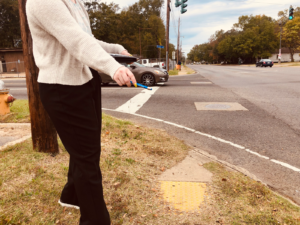
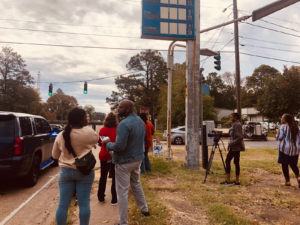
Furthermore, navigating the corridor is especially difficult and dangerous for people with disabilities or mobility restrictions. The sidewalks are in poor condition or completely absent in many places, and other aspects, such as wide intersections, make the area extremely challenging and risky.
Improvements in this part of South Monroe are crucial not only because of the opportunity to connect important parts of the city but also because the area is one that has been historically neglected and disadvantaged. While 63% of the city’s residents are African American, that number jumps to over 90% of the residents in the project area. Over the years, investment and development in the area has lagged behind other parts of the city. This means the population faces significant obstacles to getting around already, and improvements to this corridor could have huge impacts.
“Many people don’t have cars, some of them don’t have money to get on the bus. They ought to be able to walk to get where they need to go without being hurt or harmed.”
-Jeanette, Monroe resident and walk audit participant
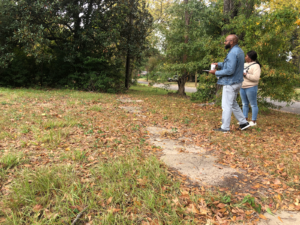
Key benefits expected
Improved safety: The South 2nd Street corridor is currently unsafe. According to data from the Louisiana Department of Transportation and Development, there have been two fatalities and 299 injuries along the route in recent years. Furthermore, a perceived lack of safety prevents many people from walking, biking, or rolling through the area. The proposed interventions would make travel safer for everyone and encourage more active forms of travel, such as walking and cycling.
Fatality risk: The city proposes to lower the speed limit from 35 to 30 miles per hour in the area. Lowering the average speed from 35 to 30 miles per hour would decrease the fatality risk by 57% over the next 20 years.
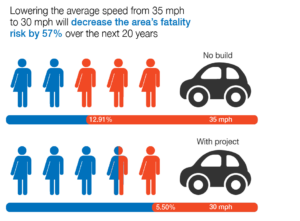
More walkable–The current walk score for the area is between 47-54 (“car-dependent”). If the proposed changes are made, however, the score could increase to around 77 (“very walkable”).
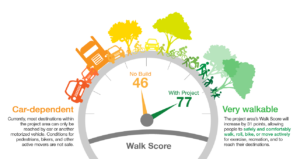
More cycling and better health: Currently, it is difficult and dangerous to travel in the corridor by bicycle. The proposed interventions would significantly improve bikeability, which would make biking a viable and enjoyable means of travel. This would result in a significant increase in trips via bicycle, yielding significant health benefits as well. The Cycling and Pedestrian Health Module of the tool gives us the ability to predict reductions in rates of common diseases (related to enhanced opportunities for daily physical activity) over 20 years for the people who switch to more biking. Based on the results, the proposed interventions could have the following impacts on the disease rates of 1,288 new cyclists over the next 20 years.
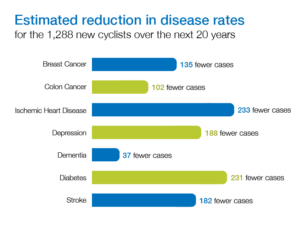
Less driving → cleaner environment: Giving residents viable and safe alternatives to driving can also significantly reduce climate emissions. The tool found significant potential reductions in carbon monoxide, carbon dioxide, particulate matter, nitrogen oxides, and more.
Conclusions
With support from CDC’s Active People, Healthy Nation℠ Initiative, Mayor Ellis and his administration will continue to work to build healthier, more prosperous neighborhoods throughout the South 2nd Street Corridor and Monroe more broadly. The results from the Measuring the Benefits of Complete Streets tool show that installing bike tracks and high-visibility crosswalks, as well as improving sidewalks and transit routes, will help build healthier and more resilient communities.